 W
WThe Mainzer Adelsverein at Biebrich am Rhein, better known as the Mainzer Adelsverein, organized on April 20, 1842, was a colonial attempt to establish a new Germany within the borders of Texas.
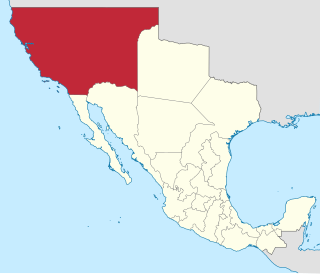 W
WAlta California, also known as Nueva California, among other names, was a province of New Spain, formally established in 1804. Along with the Baja California peninsula, it had previously comprised the province of Las Californias, but was split off into a separate province in 1804. Following the Mexican War of Independence, it became a territory of Mexico in April 1822 and was renamed Alta California in 1824. The claimed territory included all of the modern US states of California, Nevada and Utah, and parts of Arizona, Wyoming, Colorado and New Mexico. In the 1836 Siete Leyes government reorganization, the two Californias were once again combined. That change was undone in 1846, but rendered moot by the U.S. military occupation of California in the Mexican-American War.
 W
WBaja California Territory was a Mexican territory from 1824 to 1931, that encompassed the Baja California Peninsula of present-day northwestern Mexico. It replaced the Baja California Province (1773–1824) of the Spanish colonial Viceroyalty of New Spain, after Mexican independence. Along with Alta California, the two territories were split from the Spanish The Californias region.
 W
WThe Cahokia polity was a political entity that existed with Cahokia as it's center and exercising control over outlying areas. Unlike other Mississippian chiefdoms the Cahokia polity had an unusual early emergence, high population, and noted greater regional influence. The majority opinion that a Cahokia chiefdom or a pre-state existed is due to the fact that certain indicators of a state aren't apparent in Cahokia's ruins. Despite Cahokia's large size, certain determining technological and political advance indicating a typical state haven't been found in studies of Cahokia.
 W
WThe California Republic, or Bear Flag Republic, was an unrecognized breakaway state from Mexico, that for 25 days in 1846 militarily controlled an area north of San Francisco, in and around what is now Sonoma County in California.
 W
WChan Santa Cruz was the name of a shrine in Mexico of the Maya Cruzob religious movement. It was also the name of the town that developed around it and, less formally, the late 19th-century indigenous Maya state, in what is now the Mexican state of Quintana Roo, of which it was the main center. This area was the center of the Caste War of Yucatán beginning in 1847, by which the Maya established some autonomous areas on the east side of the Yucatán Peninsula. The main conflict ended in 1915, when they agreed to recognize the Mexican government, but the last time that Mexican troops took action against a Maya village in this area was in 1933.
 W
WThe Cherokee Nation was a legal, autonomous, tribal government in North America recognized from 1794 to 1907. It was often referred to simply as "The Nation" by its inhabitants. The government was effectively disbanded in 1907, after its land rights had been extinguished, prior to the admission of Oklahoma as a state. During the late 20th century, the Cherokee people reorganized, instituting a government with sovereign jurisdiction known as the Cherokee Nation. On July 9, 2020, the United States Supreme Court ruled that the Muscogee (Creek) Nation had never been actually disestablished in the years before allotment and Oklahoma Statehood.
 W
WThe Comancheria or Comanchería is the region of New Mexico, west Texas and nearby areas occupied by the Comanche before the 1860s.
 W
WThe Republic of Indian Stream or Indian Stream Republic was an unrecognized constitutional republic in North America, along the section of the border that divides the current Canadian province of Quebec from the U.S. state of New Hampshire. It existed from July 9, 1832, to August 5, 1835. Described as "Indian Stream Territory, so-called" by the United States census-taker in 1830, the area was named for Indian Stream, a small watercourse. It had an organized elected government and constitution and served about three hundred citizens.
 W
WThe Republic of East Florida, also known as the Republic of Florida or the Territory of East Florida, was a putative republic declared by insurgents against the Spanish rule of East Florida, most of whom were from Georgia. John Houstoun McIntosh was chosen as "Director" of the self-named Patriots in March, 1812, to receive formal Spanish capitulation at Amelia Island. In July, while under the occupation of U.S. forces, the Patriots created a constitution of government that provided for an executive office, a legislative council, and a court system. Under its provisions, on July 27 McIntosh was named "Director of the Territory of East Florida". He was later succeeded in that office by Gen. Buckner Harris. Patriots wished neither independence nor statehood in the United States; they desired annexation by the U.S., connoted by the word "Territory" in their name of the country, and as expressly declared by the delegates at their constitutional convention.
 W
WThe Republic of the Rio Grande was an independent nation that insurgents fighting against the Centralist Republic of Mexico sought to establish in northern Mexico. The Republic of the Rio Grande was just one of a series of independence movements in Mexico under the unitary government dominated by Santa Anna, including the Republic of Texas, the Republic of Zacatecas, and the Republic of Yucatán. The rebellion lasted from 17 January to 6 November 1840.
 W
WThe State of Scott was a Southern Unionist movement in Scott County, Tennessee, in which the county declared itself a "Free and Independent State" following Tennessee's decision to secede from the United States and align the state with the Confederacy on the eve of the American Civil War in 1861. Like much of East Tennessee, Scott became an enclave community of the Union during the war. Although its edict had never been officially recognized, the county did not officially rescind its act of secession until 1986.
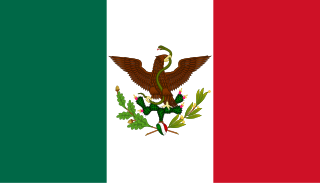 W
WThe Second Federal Republic of Mexico is the name given to the second attempt to achieve a federalist government in Mexico after a period of centralism. Officially called the United Mexican States, a federal republic was established again on August 22, 1846 when interim president José Mariano Salas issued a decree restoring the 1824 constitution. The Second Republic continued to be rocked by the political instability that had characterized Mexico since independence. Mexico's loss in the war with the United States during this time saw half of Mexican territory become part of the United States. Even though Antonio López de Santa Anna played a major role in that loss, he returned to the presidency afterwards, selling further northern territory to the United States. The sale of the Mesilla Valley was for many the final straw, and liberals promulgated of the Plan of Ayutla in 1854, calling for the overthrow of Santa Anna. Santa Anna went into exile and the liberals set about implementing their vision of Mexico.
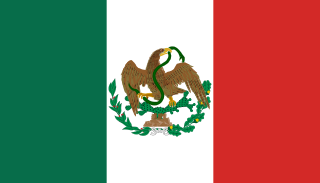 W
WThe Supreme Executive Power was the Provisional Government of Mexico that governed between the fall of the First Mexican Empire in April, 1823 and the election of the first Mexican President, Guadalupe Victoria in October 1824. After Emperor Iturbide abdicated, the sovereignty of the nation passed over to congress which appointed a triumvirate, made up of Guadalupe Victoria, Pedro Celestino Negrete, and Nicolas Bravo, to serve as the executive, while a new constitution was being written.
 W
WThe Republic of Texas was a sovereign state in North America that existed from March 2, 1836, to February 19, 1846, although Mexico considered it a rebellious province during its entire existence. It was bordered by Mexico to the west and southwest, the Gulf of Mexico to the southeast, the two U.S. states of Louisiana and Arkansas to the east and northeast, and United States territories encompassing parts of the current U.S. states of Oklahoma, Kansas, Colorado, Wyoming, and New Mexico to the north and west. The citizens of the republic were known as Texians.
 W
WThe Thirteen Colonies, also known as the Thirteen British Colonies or the Thirteen American Colonies, were a group of colonies of Great Britain on the Atlantic coast of North America founded in the 17th and 18th centuries which declared independence in 1776 and formed the United States of America. The Thirteen Colonies had very similar political, constitutional, and legal systems, and were dominated by Protestant English-speakers. The New England colonies, as well as the colonies of Maryland and Pennsylvania, were founded primarily for religious beliefs, while the other colonies were founded for business and economic expansion. All thirteen were part of Britain's possessions in the New World, which also included colonies in Canada, Florida, and the Caribbean.
 W
WTsenacommacah is the name given by the Powhatan people to their native homeland, the area encompassing all of Tidewater Virginia and parts of the Eastern Shore. More precisely, its boundaries spanned 100 miles (160 km) by 100 miles (160 km) from near the south side of the mouth of the James River all the way north to the south end of the Potomac River and from the Eastern Shore west to about the Fall Line of the rivers.
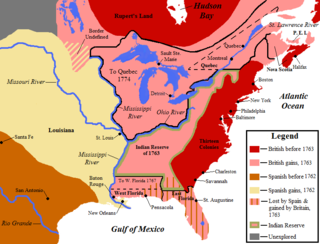 W
WThis is a list of historic regions of the United States that existed at some time during the territorial evolution of the United States and its overseas possessions, from the colonial era to the present day. It includes formally organized territories, proposed and failed states, unrecognized breakaway states, international and interstate purchases, cessions, and land grants, and historical military departments and administrative districts. The last section lists informal regions from American vernacular geography known by popular nicknames and linked by geographical, cultural, or economic similarities, some of which are still in use today.
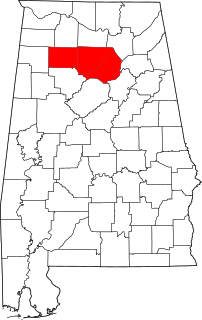 W
WThe informal "Republic" of Winston, or Free State of Winston, an area encompassing the present-day Winston, Cullman and Blount counties of Alabama, was one of several places in the Confederate States of America where disaffection during the American Civil War was strong. In Winston County, this opposition became violent and had long-lasting political consequences—deep enough to generate a legend after the war that the county had seceded from Alabama.